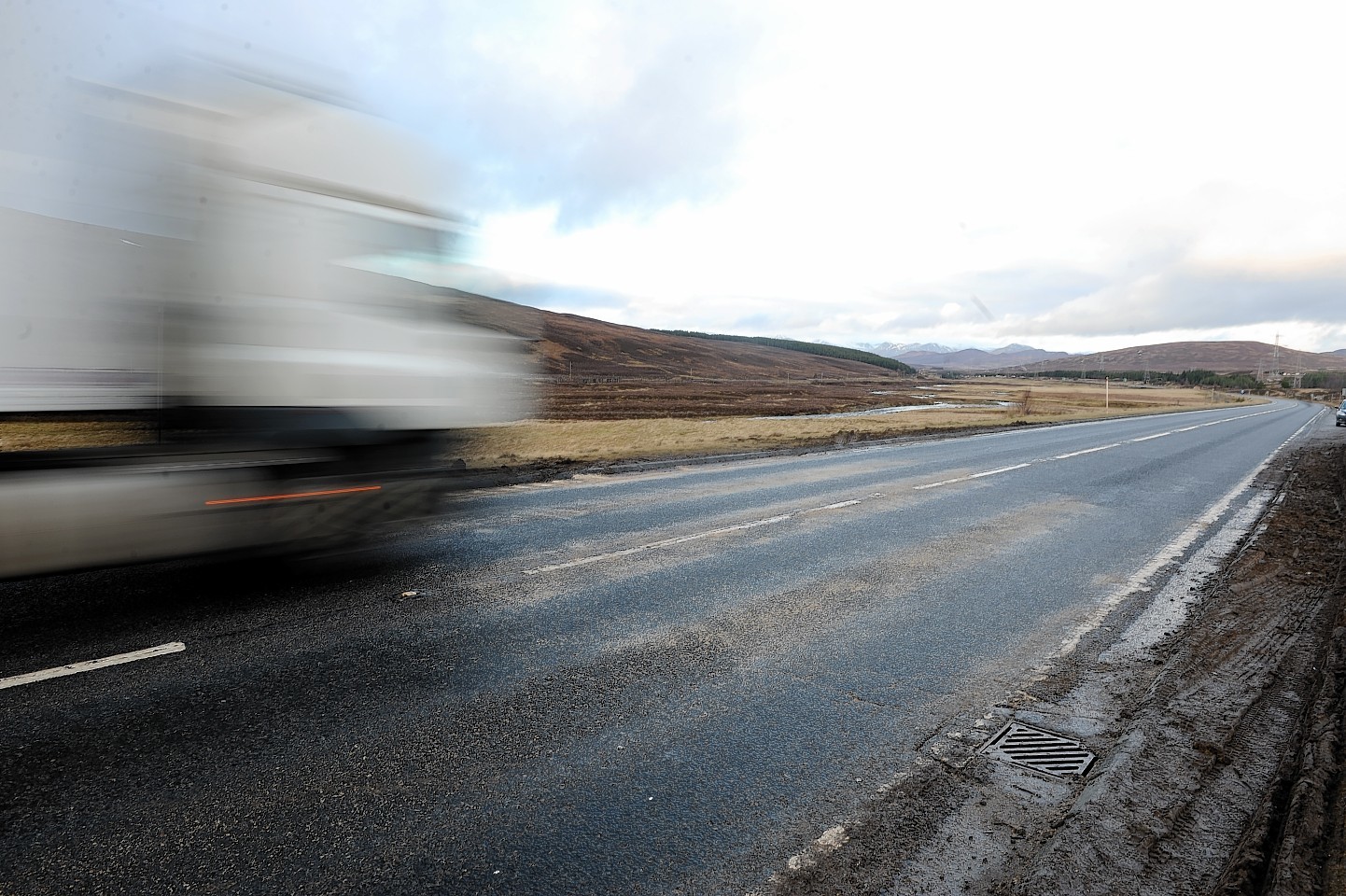The stereotypical view of the A9 is that of the convoy of traffic headed by a delivery lorry for a big chain department store or supermarket.
But this scene reflects the strategic importance of the route for business – not just between Inverness and Perth but between the central belt and the entire north of the country, including Moray, the Western Isles and the northern isles.
The Scottish Council for Development and Industry (SCDI) has carried out research on the A9, which highlights concerns about closures and the impact of diversions after accidents, and lost productivity due to congestion and slow traffic.
It wants the route to be dualled in order to increase investment, cut transport costs and improve business confidence.
Fraser Grieve, the SCDI’s director in the Highlands and islands, said: “The A9 has long been recognised as a road which claims too many lives and each one lost is a tragedy for the families affected.
“It is right that every measure to reduce fatal and serious accidents is considered and that action is taken to make the road as safe as possible.
“We need to take that action in a way that reduces the risk of accidents, whilst recognising its importance to the region’s economy and the need for vehicles to flow along this vital transport artery.”
He added that the SCDI supported the Scottish Government’s aim of dualling the road but it was “vital that the competitiveness of the Highlands is not eroded compared to other areas”.
Mr Grieve said: “Research commissioned by Transport Scotland showed that average journey times will likely increase as a result of the average-speed cameras by between 5 and 10 minutes.
“SCDI estimate that, as a result, there is a potential economic cost to the region of £4.3million to £8.7million each year, with the pilot to increase the speed limit for HGVs to 50mph in place.
“Without that pilot, journey times would increase by 14-20 minutes with an economic cost of £12.2m-£17.4m.
Mr Grieve added: “Businesses have said that it could be harder for them to compete against those in other parts of the country through increased costs and journey times, as well as a reduced attractiveness for investment into the region.”
It is a concern echoed by other business organisations in the region.
Amanda Frazer, chairwoman of the Federation of Small Businesses’ Highlands and islands committee, said: “The Scottish Government’s decision to invest huge sums of public money dualling the A9 to Inverness by 2025 is an enormous shot in the arm for the north of Scotland’s economy and we look forward to the completion of the project.
“Road safety remains an issue in the interim and the Scottish Government is to be commended for taking this matter seriously. However, while fully supporting the desire to make the road safer, the FSB has expressed concerns about the impact of the average-speed cameras.
“Our members fear that increased driver frustration could end up counterbalancing the calming influence of the cameras and result in little or no reduction in accidents.
“Moreover, if driving times are substantially increased, it will inevitably impact on the north’s economy.
“However, we have been given assurances by Transport Minister Keith Brown that if the average-speed cameras don’t cut accidents, then they will be removed.”
And Stewart Nicol, chief executive of the Inverness Chamber of Commerce, said his members were worried about the cameras from the outset.
He added: “We have also had strong representation from a number of our members expressing real concerns about their ability to do business in the central belt from their bases across the Highlands.
“In addition, we have concerns about the negative message these cameras put out about ease of access to Inverness and the Highlands.
“None of us want to see another accident on the A9 but the step-change in safety we all seek will only be achieved when the road is finally fit for purpose.
“While the cost of the cameras is modest in relation to the overall cost of dualling, we have always pressed for the timescales for this work to be brought forward and strongly believe this money would have been better spent on the direct costs of dualling.”
